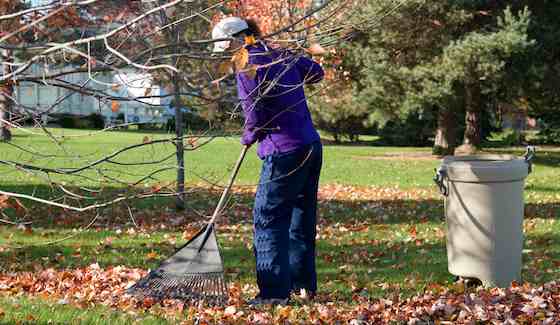By Sean Conway

As fall marches on, and mild conditions give way to cooler temperatures, more ample rain and gusty winds, now is the time to get going on your garden to-do list before it becomes less comfortable to work outdoors.
Here is a list of chores to consider before the weather starts to turn.
-- Cut back any perennials that have started to show signs of yellow foliage.
After a good haircut, many will form neat clumps of basal foliage, while others will remain dormant. In either case, your garden will look neater and there will be less work to do in the spring.
-- As leaves fall from the trees in your yard (or your neighbors'), keep on top of raking, especially on lawns.
Leaves can pile up quickly, shading grass and matting it down especially if they get wet. Prolonged coverage with excessive amounts of leaves can be harmful to your lawn, especially before the grass has gone dormant.
-- Gather foliage or needles from conifers as your evergreens do their annual fall shedding of old growth.
Look for brown or yellowing foliage near the interior branches. Don't worry -- your trees are not sick. This is normal and happens every fall as temperatures cool and light decreases. Dropped conifer foliage makes excellent top dressing for winter beds. It is slow to decay, shades beds from winter sun, preventing them from freezing and thawing, prevents soil erosion, and is easy to rake up in spring.
-- Tie up ornamental grass clumps.
I use heavy-gauge twine and a few wooden stakes discreetly hidden amid the foliage to shore up my largest clumps of ornamental grasses before they turn brown at the end of the season. Excessive amounts of rain, wind or snow will cause them to splay into the garden equivalent of a bad hair day. I usually wrap two to three pieces of twine around the circumference of each clump. I wrap the first piece about one-third of the way up from the crown, where the stems are the thickest, and cinch the twine tight. I add a second piece about two-thirds up the clump just before the blades of grass start to arch away from center of the plant. I tie this piece slightly looser than the bottom piece. Depending on the height of the plant, I sometimes add a third piece if I feel the clump needs the extra support. If tied early enough in the season, the plants will continue growing enough to hide any evidence of the twine or the stakes. This keeps the clumps looking neat well into winter.
-- Plant a cover crop on the vegetable garden.
Cover crops are sometimes called green manure. They are usually some type of annual seed that germinates quickly and can later be tilled under, adding beneficial organic material to the soil. Green manures can be added in the spring or the fall, but I prefer to plant a cover crop in the fall. I usually plant a mixture of oats and field peas. Both germinate quickly, even in cool weather. The peas add nitrogen to the soil and the oats grow thick enough to protect the soil from erosion over the winter.
-- Top-dress cleaned beds with compost or aged manure.
I started adding compost to my beds in both fall and spring, and I have seen a big difference in the growth of my plants. Adding organic content to beds in the fall gives the compost time to incorporate into the soil over the winter. When plants begin their spring growth, they have access to good, rich soil.
-- Order garlic for fall planting.
Garlic is best planted in the late fall when temperatures have cooled considerably. Order now so you will have the bulbs on hand when the time comes to plant.
-- Pot up leftover spring bulbs such as daffodils, crocus and hyacinths for forcing in late winter.
Place the pots in a cold frame or bury the pots directly into any open space in the garden and cover with a thick layer of mulch. The mulch will prevent the ground for freezing solid, so you can dig the pots up later in the season.
-- Add stakes to any trees that were planted this past season.
Winter winds and wet soils can be harmful to newly planted trees. A few stakes will keep young trees in place until they have the chance to form adequate root systems.
Keeping up with fall garden chores means more time relaxing by the fire later in the season -- which reminds me: I need to add one more thing to my list. Bring firewood under cover so it can dry before fire season starts!
Copyright ©, TRIBUNE MEDIA SERVICES, INC
AUTOS | HOBBIES | EDUCATION | FAMILY | FASHION | FOOD & RECIPES | HOME DECOR | RELATIONSHIPS | PARENTING | PETS | TRAVEL | WOMEN
Home & Garden - Still Plenty to Do in the Garden to Get Ready for Winter